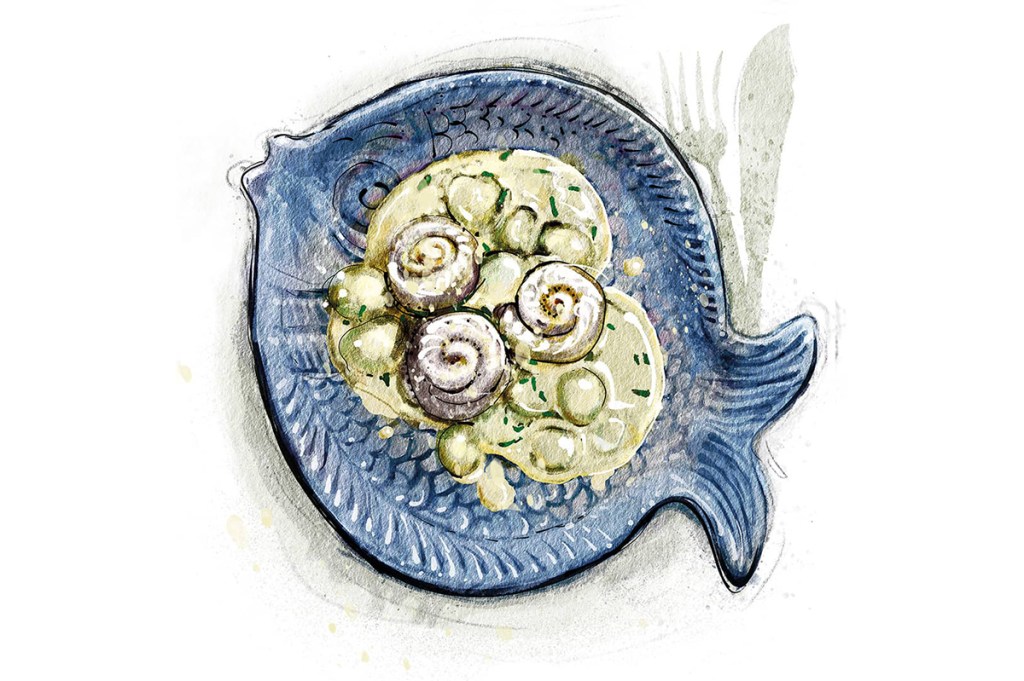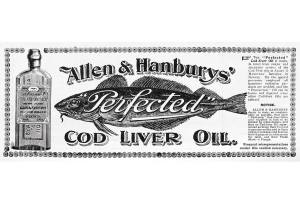One of the joys of writing about old-fashioned food is coming across dishes that are new to me, and turn out to be such a delight that they gain a recurring role in my cooking. Of course, some I’ve encountered were already among my established regulars – boeuf bourguignon, coq au vin. Others were childhood staples – shepherd’s pie, proper rice pudding. But a few of the dishes I take into my kitchen to work with I’ve never even tried before.
The first recipe I wrote for The Spectator was for blancmange. Having grown up during the brief period when milk jelly was fashionable in Britain, I’d avoided blancmange like the plague. I was sure it must be rubbery, flavorless and a bit, well, creepy. Quite a bit of persuasion and research were needed before I was converted: blancmange is delightful! Cool, wibbly, creamy — and the perfect vehicle for all sorts of flavorings and aromatics.
Likewise, I’d never eaten chicken Marbella before it landed on my desk as a project, despite its ridiculous popularity during its heyday. And what a revelation! Bold, garlicky, winey and strangely sweet; delicious and not like anything I’d ever tasted before.
Sole Véronique occupied a similar place in my culinary brain: I knew of it — fish with grapes, right? That didn’t sound great, but I’d never eaten it, let alone cooked it. Still, it’s a classic dish, and I’m not easily daunted, so I rolled up my sleeves and started peeling grapes.
Sole Véronique is lemon or Dover sole — lemon is substantially cheaper, so that’s my preference — poached in wine or vermouth, and then coated in a creamy sauce. And yes, it’s served with peeled green grapes.
The dish was created in London by Auguste Escoffier, who’s credited with redefining French cookery, codifying French classical sauces and creating the à la carte menu. But his legacy also extends to individual dishes: peach Melba, cherries jubilee, dauphinoise (scalloped) potatoes — and sole Véronique.
In 1890, Escoffier accepted an invitation to transfer to London’s Savoy hotel, where he reorganized the kitchen and enjoyed great renown. Unfortunately, it wasn’t to last: despite booming business, profits were decreasing and fraud was suspected. Investigators were employed to tail Escoffier and César Ritz (with whom he worked). The suspicions were confirmed and they were unceremoniously booted out. But almost immediately they set up a kitchen at the new Carlton hotel, which became so successful it stole custom from the Savoy.
We know that sole Véronique was invented at the Carlton in tribute to the opera Véronique. The exact date of its creation is unclear, but it is likely that it was 1903, when Véronique was enjoying a successful run at the Coronet theater.
Like blancmange and chicken Marbella, sole Véronique tastes old-fashioned, but in the best possible way. That’s probably because poaching fish has fallen a little out of vogue — we do a lot more pan-frying now — but it’s a beautiful way of cooking fish ever-so-gently and imbuing both it and any sauce with fantastic flavor. I think we’ve become quite scared of cooking fish. It often comes complete with bones, skin and guts, requiring specialist knowledge to prepare. It’s expensive, and it doesn’t take kindly to being overcooked. This dish negates all of that: fillets can be bought ready to cook, and poaching has far more tolerance than the harsher heat of frying, almost inevitably creating moist and tender fish.
The sauce too is foolproof — no emulsions or risk of splitting. The wine used to poach the fish is reduced to a third of its original volume, before you add tarragon and a generous swirl of double cream. It’s a simple sauce but a luxurious one, just thick enough to coat the back of a spoon, and demands to be mopped up. The cool, sweet-sour grapes are the perfect complement to the rich, savory dish. It’s almost like that Escoffier knew what he was doing.
Serves 2 as a main course, or 4 as a starter
Takes 20 minutes, plus cooling
- 2½ oz green, seedless grapes
- ¾ oz butter
- 4 skinned fillets of lemon sole
- 6 fl oz white wine
- 1 tbsp fresh tarragon, chopped
- 5 fl oz double cream
- Prepare the grapes. Submerge them in boiling water for two minutes, then remove and peel. Slice in half and chill until you’re ready to use them
- Preheat oven to 355°F. Place eight dots of butter across a small, deep oven dish
- Slice the fillets down the middle through the central line, and then roll each half fillet up, starting from the narrow end. Place each rolled fillet onto one of the dots of butter, pour the white wine around the fish, then place in the oven and cook for 15 minutes
- Carefully drain the poaching liquid into a small pan. Cover the now drained, cooked fillets with tin foil, and set to one side
- Reduce the liquid by two-thirds, add the tarragon and cream, and cook for a minute more. Taste, and season accordingly
- Stir the grapes through the sauce. Plate the fish, then pour the sauce generously over the top
This article was originally published in The Spectator’s UK magazine. Subscribe to the World edition here.


















